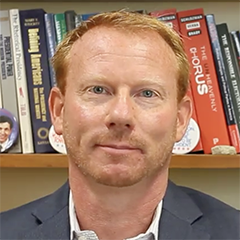You are not currently logged in. Please create an account or log in to view the full course.
Presidential Nominations
- About
- Transcript
- Cite
Primaries and Caucuses
In this course, Dr David Andersen (Durham University) explores the system of primaries and caucuses – also known as the presidential nomination process – in the United States. In the first module, we are introduced to the system of presidential elections and given some key historical context. In the second module, we explore primaries and caucuses, outlining with real-world examples the different forms of primary, as well as the history and relative importance of both primaries and caucuses. In the third module, we turn to the question of ‘Theory vs. Practice’ by interrogating the theory underpinning this process – from the ‘Quiet Campaign’ up to six years prior to the primaries, to the eventual choosing of a presidential candidate by party elites, party activists, and ordinary voters. In the fourth module, we explore and critique the unique influence held by two key states in this process: Iowa (IA) and New Hampshire (NH). In the fifth and final module, we draw this all together to think about the full map of the presidential nomination process in the US.
Presidential Nominations
In this module, we sketch out the system of presidential elections in the United States, focusing in particular on: (i) the historical origins of this system; (ii) the silence of the Constitution on the subject of presidential elections; (iii); how this ambiguity has impacted the evolution of the presidential nomination system; (iv) the unanticipated growth of the role of the President and (v) the emergence of political parties in the US; (vi) the means by which a primary system attempted to meet this need as well as the challenges faced along the way.
Cite this Lecture
APA style
Andersen, D. (2021, December 13). Primaries and Caucuses - Presidential Nominations [Video]. MASSOLIT. https://massolit.io/courses/primaries-and-caucuses/primaries-and-caucuses
MLA style
Andersen, D. "Primaries and Caucuses – Presidential Nominations." MASSOLIT, uploaded by MASSOLIT, 13 Dec 2021, https://massolit.io/courses/primaries-and-caucuses/primaries-and-caucuses

